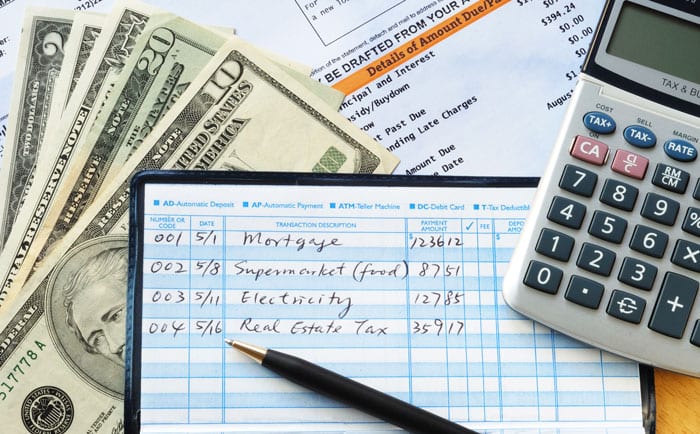Master Your Finances: The Ultimate Guide to Budgeting Monthly Expenses
Why Budgeting Monthly Expenses is the Key to Financial Freedom
Struggling to make your paycheck last? Feeling like your money disappears before the month ends? You’re not alone. Budgeting monthly expenses is the secret weapon that transforms financial stress into confidence. Imagine never worrying about unexpected bills, effortlessly saving for the future, and having full control over where your money goes.
Many believe budgeting is restrictive, but in reality, it’s liberating. When done right, it ensures you enjoy life without financial anxiety. Let’s dive into a powerful, effective strategy to take charge of your finances once and for all.
The Hidden Drain: Where Your Money Really Goes
It’s easy to underestimate how small daily expenses snowball into significant costs. A quick coffee run, spontaneous online purchases, or subscriptions you forgot about all quietly chip away at your income. Before you realize it, a large portion of your earnings is gone, leaving you wondering where it went.
The first step? Gaining visibility. Most people don’t track their spending closely, which creates financial blind spots. By identifying unnecessary leaks, you can redirect your cash flow toward meaningful goals instead of mindless spending.
Track Every Dollar with Precision
Before building an effective budget, you need a crystal-clear view of your income and expenses. Use these simple but powerful techniques:
-
Bank & Credit Card Statements: Review at least three months’ worth of transactions to spot patterns.
-
Spending Categories: Divide your expenses into essentials (rent, utilities, groceries) and non-essentials (eating out, entertainment, shopping).
-
Automated Expense Tracking Apps: Tools like YNAB, Mint, or PocketGuard categorize and analyze your spending in real-time.
-
Cash-Only Experiment: Withdraw a set amount of cash for discretionary spending and track how quickly it depletes.
The Power of an Intentional Spending Plan
Forget the traditional rigid budgets that feel like a punishment. Instead, shift to a proactive spending plan that aligns with your priorities. Here’s how:
The 50/30/20 Framework – A Simple Yet Effective Blueprint
This widely used structure ensures financial balance:
-
50% Needs: Rent/mortgage, utilities, groceries, insurance, transportation
-
30% Wants: Dining out, hobbies, entertainment, travel
-
20% Financial Growth: Savings, investments, debt payments
Customization Tip: If debt repayment is a priority, adjust the percentages to 40/20/40 (or any ratio that accelerates financial progress while maintaining a comfortable lifestyle).
Zero-Based Budgeting: Every Dollar Has a Job
This strategy ensures every dollar you earn is assigned to a category:
-
Allocate income to specific needs, wants, and goals.
-
End each month with a balance of zero—meaning every dollar is working for you.
-
Adjust dynamically based on financial fluctuations.
Hidden Budget Busters & How to Eliminate Them
Even the most well-planned budgets can be derailed by sneaky expenses. Watch out for these common pitfalls:
1. Subscription Overload
You may be paying for multiple streaming services, magazine subscriptions, and unused memberships. Audit your recurring expenses and cancel anything that doesn’t add significant value.
2. Emotional & Impulse Spending
Retail therapy feels good in the moment but often leads to buyer’s remorse. Implement a 48-hour rule before making non-essential purchases.
3. Lifestyle Inflation
When income increases, so does spending. Instead of upgrading your lifestyle immediately, divert extra income toward savings and investments.
The Game-Changing Strategy: Automate Your Finances
Eliminate the stress of manually managing bills and savings with automation:
-
Direct Deposit Splitting: Route portions of your paycheck to different accounts (bills, savings, spending).
-
Automatic Transfers: Set up scheduled transfers for rent, utilities, and savings to avoid late fees and missed payments.
-
Credit Card Auto-Payments: Prevent interest charges by ensuring payments are made on time.
How to Budget on a Variable Income
If your earnings fluctuate, budgeting can feel challenging. Here’s how to maintain stability:
-
Calculate Your Baseline: Use the lowest monthly income estimate to create a safety-net budget.
-
Build a Buffer Fund: Set aside extra earnings during high-income months to cover leaner periods.
-
Prioritize Essentials: Cover non-negotiables first before discretionary spending.
The Psychological Shift: Budgeting Without Feeling Deprived
Many fear budgeting means sacrificing enjoyment, but the opposite is true. When you assign money to fun activities guilt-free, you actually enjoy spending more—because it’s intentional.
-
Reframe Budgeting as a Freedom Tool: Instead of “I can’t afford this,” say, “This isn’t a priority right now.”
-
Create a Fun Fund: Allocate a set amount each month to guilt-free indulgences.
-
Use Reverse Budgeting: Set aside savings first, then spend the rest as you wish.
Maximizing Savings Without Feeling the Pinch
Even if you think there’s no room for saving, small tweaks can add up:
-
Round-Up Apps: Acorns and Digit round up purchases and invest the spare change.
-
Cashback & Rewards: Use cashback credit cards or apps like Rakuten to earn back money on everyday spending.
-
Grocery Hacks: Meal planning and shopping sales can slash food expenses significantly.
Avoiding Common Budgeting Pitfalls
1. Not Reviewing & Adjusting Monthly
Budgets should evolve based on life changes. Set a recurring date each month to review and tweak as needed.
2. Forgetting Annual & Irregular Expenses
Holidays, car maintenance, and medical bills shouldn’t catch you off guard. Create a sinking fund for these predictable but infrequent costs.
3. Relying on Willpower Alone
Willpower is finite. Set up systems that enforce discipline automatically, like separate accounts for bills and discretionary spending.
Your Financial Future Starts Today
Mastering budgeting monthly expenses is more than just tracking numbers—it’s about taking control of your financial destiny. With the right strategy, you can experience financial peace, freedom, and even joy in knowing your money is working for you.
Start today by tracking your expenses, creating a flexible spending plan, and automating your finances. The future version of you will thank you for the financial security and confidence you build now.
What’s your next move? Take one step today—whether it’s setting up a budget, reviewing your subscriptions, or automating savings. Every action brings you closer to financial mastery.


